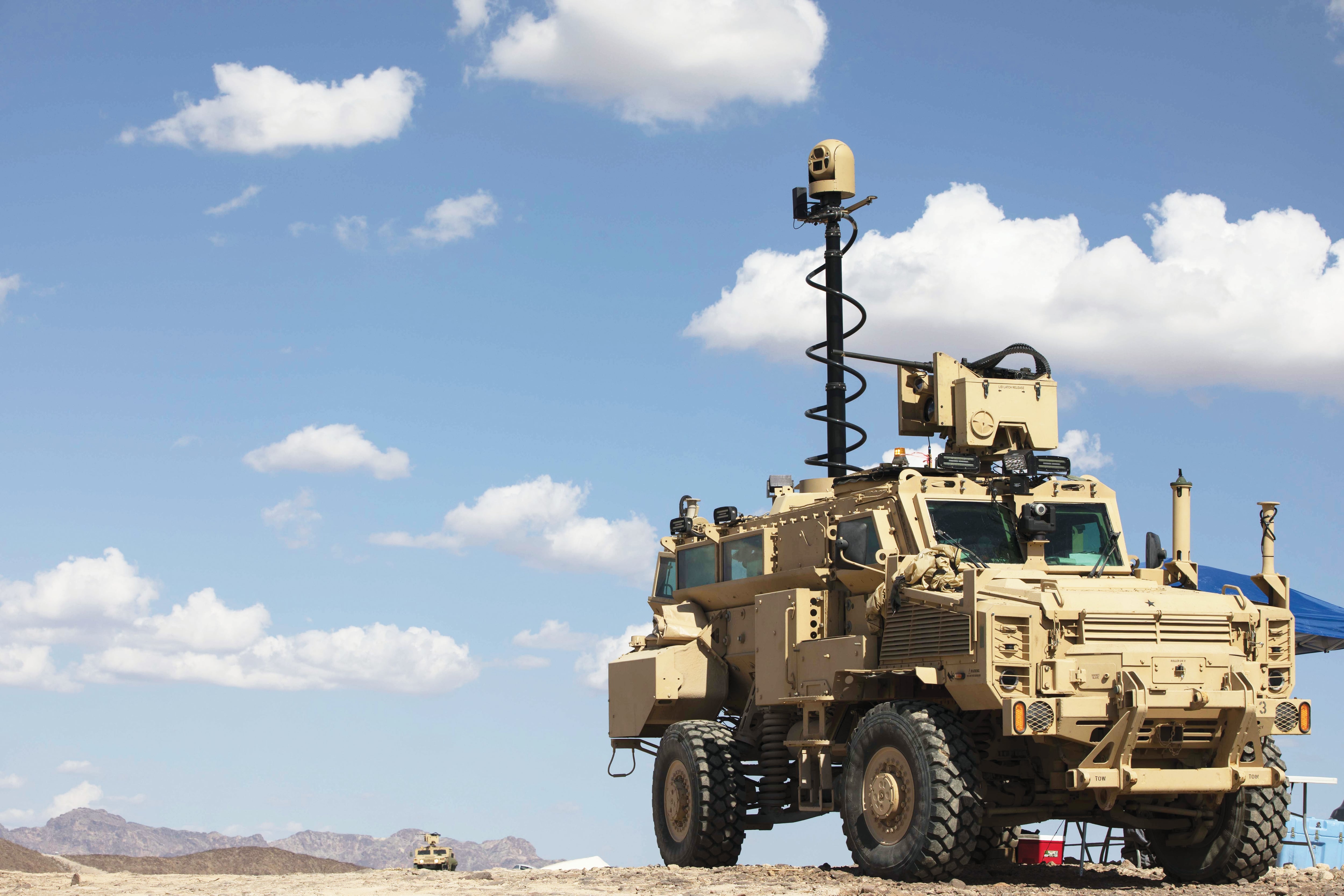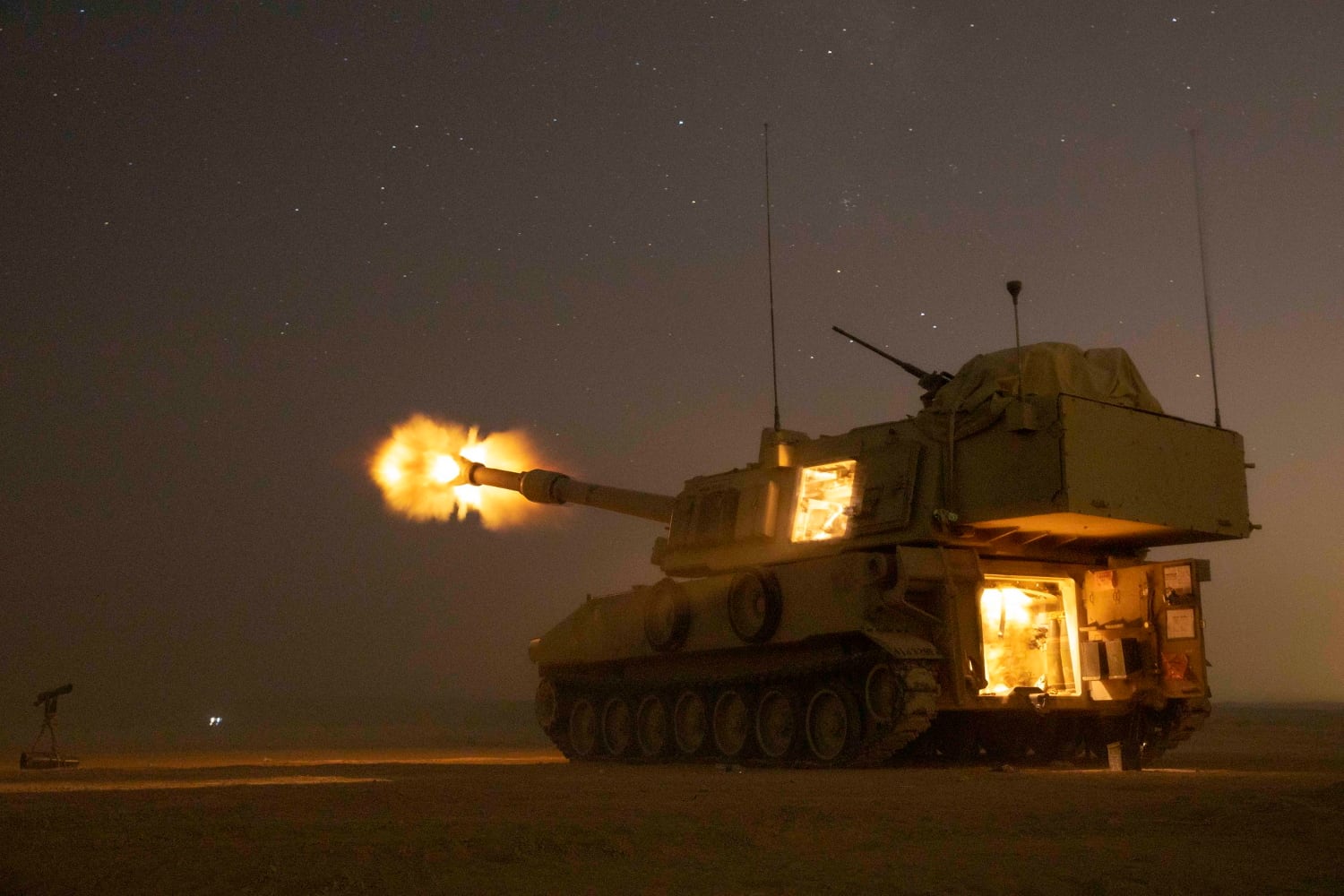WASHINGTON — The Army’s Extended Range Cannon Artillery (ERCA) system under development hit a target 43 miles away — or 70 kilometers — on the nose at Yuma Proving Ground, Arizona, Dec. 19, using an Excalibur extended-range guided artillery shell, according to the general who is overseeing the service’s Long-Range Precision Fires modernization.
“I don’t think our adversaries have the ability to hit a target on the nose at 43 miles,” Brig. Gen. John Rafferty, who is in charge of the effort, told a small group of reporters in a teleconference immediately following the test.
The Army is racing to extend artillery ranges on the battlefield to take away advantages of high-end adversaries like Russia. The ERCA cannon, when fielded, should be able to fire and take out targets from a position out of the range of enemy systems.
The ERCA cannon takes an M109A7 Paladin Integrated Management (PIM) howitzer chassis and replaces the 39-caliber gun tube with a 58-caliber, 30-foot one. Combined with Raytheon-made Excalibur munitions and an XM1113 using supercharged propellant, the Army has been able to dramatically boost artillery ranges.
In March, the Army inched closer to the ultimate goal of 70 kilometers when it took two shots, both reaching 65 kilometers in range.
In this test, the Army took three shots. The first shot came up short due to very high head winds at a high altitude and the second shot had a hardware failure, but the third shot proved that the service is getting closer to dialing in on the right balance between propellant, projectile design and other factors that play into achieving greater distances, Rafferty said.
“This demonstration is not a destination,” Col. Tony Gibbs, the Army’s program manager for combat artillery system, told reporters. “This is really just a waypoint in our ongoing campaign of learning as we work to really realign U.S. supremacy in cannon artillery. It’s definitely a big knowledge point for us today.”
Each munition fired during Saturday’s event had slight design differences to address how best to design and prepare the round to absorb the high-pressure and force of being fired at 1,000 meters per second from a gun tube of ERCA’s caliber, Rafferty said.
“What was consistent was the propellant configuration,” he added. “So we got that propellant configuration, I think dialed in really close down, which is great.”
The first shot, due to the winds, fell short by roughly 100 meters, which, Rafferty said, sounds like a lot, but is closer when considering when the munition has to travel 70,000 meters. The Army knew the first shot would come up short due to wind, but wanted to take it anyway in order to learn from it.
The second shot, the Army had modified the hardware configuration and experience a hardware failure, Gibbs confirmed. Specifically, the Army added an isolator for the inertial measurement unit, which is essentially a shock absorber to counter the pressure spike in the chamber.
“We did have some concerns with the survivability of that,” Rafferty said.
RELATED

“Today is really the build up of about a year and a half of testing and analysis that we’ve done on the Excalibur projectile in terms of its ability to withstand a harsher environment,” Gibbs said. “So through a number of tests and analysis, we determined what muzzle velocity is required, what chamber pressures the projectile can withstand and so all that came together in today’s test; we fired it at the right propellant combination to provide the right muzzle velocity to achieve the range.”
Additionally, the Army demonstrated the Excalibur, as it exists in the inventory now, is survivable with a higher muzzle velocity and pressures to get to 70 kilometer ranges and hit targets directly, Gibbs added.
In the coming year, “we’ll make a lot of decisions and actually start to address them, snapping the chalk line on a few things,” Rafferty said. “We will snap the chalk line on the propellant, we will snap the chalk line on the projectile design and begin to look towards manufacturability, towards production.”
The Army will continue its soldier-centered design effort to include ensuring the configurations for the propellant and charge are something the soldiers can handle and that it doesn’t affect the rate of fire, Rafferty noted. “We obviously don’t want to give them a configuration that’s going to cause them to have to shoot slower.”
And the configuration of projectiles and propellant also has to be optimally stowed in a howitzer to maximize the number of kills onboard.
RELATED

The Army is looking to nail down its design in 2021, Gibbs said. “The muzzle velocities and pressures that those munitions see is important in the final design choices they make, [but also] for example, the size of the rocket motor, the type of joint holding the rocket motor to the warhead, that ultimately affects the performance in the range that it will get, to include the type of steel that we use affects lethality. You see there’s multiple factors that are in play right now and as we converge on our designs this year, we’ll start to neck down on those choices into our final designs and that we will take into qualification.”
The Army is pushing to get an urgent material and safety releases to field the ERCA system in 2023, Rafferty said.
Jen Judson is an award-winning journalist covering land warfare for Defense News. She has also worked for Politico and Inside Defense. She holds a Master of Science degree in journalism from Boston University and a Bachelor of Arts degree from Kenyon College.








